To use Tabs in Page Builder go to Add Content > Saved Modules (at the bottom). There are 3 versions of saved tab layouts there. Insert and make your edits and then follow the instructions below to add the style to the page.
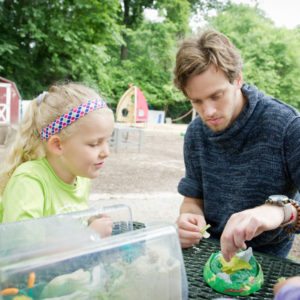 Our Preschool and Prekindergarten program is designed to meet children exactly where they are, and help them grow, during these important developmental years. At Grace, our day together is structured to allow time for exploring, moving our bodies, working together, caring for ourselves independently, and learning to cooperate and share. In small groups and with the support of our master teachers, early childhood students at Grace develop a sense of belonging and of bravery: to try new things, to ask big questions, and to take their place in the larger life of the school and world around them.
Our Preschool and Prekindergarten program is designed to meet children exactly where they are, and help them grow, during these important developmental years. At Grace, our day together is structured to allow time for exploring, moving our bodies, working together, caring for ourselves independently, and learning to cooperate and share. In small groups and with the support of our master teachers, early childhood students at Grace develop a sense of belonging and of bravery: to try new things, to ask big questions, and to take their place in the larger life of the school and world around them.
Our youngest students start their day on the playground. The open space and a wide variety of activities allow the children a more gentle transition from home to school. The teachers are available to connect with families during drop-off, and each child is gently greeted and encouraged to choose an activity: tricycles, scooters, sandbox, climber, and tire swing are only some of the choices.
After the big muscle play of the playground, the children are ready to move to their classrooms. Preschool and Prekindergarten students start their time inside with Morning Meeting, where we greet friends, share ideas, and make plans for choice time. Choice time includes dramatic play, sensory play, art, and activity centers related to topics the children are currently exploring and learning about. Our Emergent Curriculum approach means that Preschool and Prekindergarten students at Grace are likely to be deeply engaged in multi-level, teacher-supported play around a topic.
With an average class size of 12, and two teachers per classroom, our Early Childhood program is a place to connect, grow, and thrive. Preschool and Prekindergarten students also benefit from class time each week with our specialist teachers in music, library, science, and P.E. In addition, our Reading and Math Specialists join Prekindergarten each week to support each student’s emerging interests in literacy and numeracy.
For 2 Tabs, copy and paste this code to the "CSS" under Page Builder > Tools > Layout CSS/Javascript (copy and paste from the Text editor, not visual editor). Do not copy this bolded intro text:
.fl-tabs-horizontal .fl-tabs-label {
width: 50%;
}
.fl-tabs-panels, .fl-tabs-panel {
border-color: #fff!important;
}
.fl-tabs-horizontal .fl-tabs-label.fl-tab-active {
top: -4px!important;
border: none!important;
padding: 13px 18px 15px;
background: #2B367C!important;
}
.fl-tabs-horizontal .fl-tabs-label {
background: #FA9D05;
font-family: 'Abhaya Libre', serif;
font-weight: 700;
color: #fff;
border: none;
font-size: 1.3em;
text-align: center;
}
.fl-tabs-horizontal .fl-tabs-label:hover {
color: #F8E71C!important;
}
.fl-tabs-horizontal .fl-tabs-label:nth-child(3n+2) {
background: #8BBF57;
font-family: 'Abhaya Libre', serif;
font-weight: 700;
color: #fff;
}
.fl-tabs-horizontal .fl-tabs-label:nth-child(3n+3) {
background: #6DBFE2;
font-family: 'Abhaya Libre', serif;
font-weight: 700;
color: #fff;
}
.grace-tabs {
border-bottom: 1px solid #979797;
}

The elementary language arts curriculum at Grace embraces a Balanced Literacy approach to reading and writing instruction. Guided reading groups provide a forum for teachers to individualize reading instruction. In these small groups, students read and discuss a variety of genres, both narrative and nonfiction, and are encouraged to think beyond the text. Grace teachers enjoy sharing authentic literature experiences with students through reading aloud books and poetry.
Our reading program is Guided Reading by Fountas and Pinnell. Each student is assessed at the beginning of the year to find his/her independent reading and instructional reading levels. Students are introduced to a variety of genres including fiction, non-fiction, textbooks, magazines, and online articles.
Our writing curriculum is Lucy Calkins’ Units of Study for Primary Writing, Grade 2 and Units of Study for Teaching Writing, Grades 3–5. Grace students learn to value themselves as authors. A word study program supports our readers and writers and incorporates spelling, phonics, and vocabulary to round out the language arts curriculum.
We also publish Amazing Grace, a literary magazine composed of student work, every year. The goal of the language arts program at Grace is to instill a love of reading and writing in each child and to encourage students to become lifelong learners.
For 3 Tabs, copy and paste this code to the "CSS" under Page Builder > Tools > Layout CSS/Javascript (copy and paste from the Text editor, not visual editor). Do not copy this bolded intro text:
.fl-tabs-horizontal .fl-tabs-label {
width: 33.3%;
}
.fl-tabs-horizontal .fl-tabs-label.fl-tab-active {
top: -4px!important;
border: none!important;
padding: 13px 18px 15px;
background: #2B367C!important;
}
.fl-tabs-horizontal .fl-tabs-label {
background: #FA9D05;
font-family: 'Abhaya Libre', serif;
font-weight: 700;
color: #fff;
border: none;
font-size: 1.3em;
text-align: center;
}
.fl-tabs-horizontal .fl-tabs-label:hover {
color: #F8E71C!important;
}
.fl-tabs-horizontal .fl-tabs-label:nth-child(3n+2) {
background: #8BBF57;
font-family: 'Abhaya Libre', serif;
font-weight: 700;
color: #fff;
}
.fl-tabs-horizontal .fl-tabs-label:nth-child(3n+3) {
background: #6DBFE2;
font-family: 'Abhaya Libre', serif;
font-weight: 700;
color: #fff;
}
.grace-tabs {
border-bottom: 1px solid #979797;
}
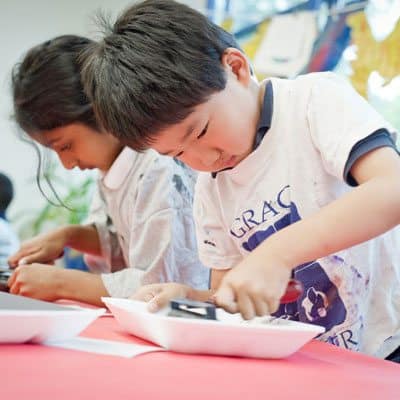 The art curriculum at Grace is developed to foster a lifelong relationship with art, to ensure self-expression, to foster creativity and awareness of the world around us, as well as to nurture an understanding of the diversity of other cultures. Additional goals of the art experience are to develop creative thinking, to serve as an emotional release, to strengthen self-concept, to heighten aesthetic awareness, to serve as balance to classroom activities, to aid in physical coordination, and last but not least, to generate joy. Through the process of creating art, the students develop their intuitive side. Art emphasizes problem solving, encourages teamwork, enriches language skills, incorporates mathematical concepts, and enlivens and integrates the social studies and language arts curriculum with hands-on projects. The main elements of art – color, line, texture, space, shape, value, form, symmetry, and composition are important aspects of all art projects.
The art curriculum at Grace is developed to foster a lifelong relationship with art, to ensure self-expression, to foster creativity and awareness of the world around us, as well as to nurture an understanding of the diversity of other cultures. Additional goals of the art experience are to develop creative thinking, to serve as an emotional release, to strengthen self-concept, to heighten aesthetic awareness, to serve as balance to classroom activities, to aid in physical coordination, and last but not least, to generate joy. Through the process of creating art, the students develop their intuitive side. Art emphasizes problem solving, encourages teamwork, enriches language skills, incorporates mathematical concepts, and enlivens and integrates the social studies and language arts curriculum with hands-on projects. The main elements of art – color, line, texture, space, shape, value, form, symmetry, and composition are important aspects of all art projects.
Grades 1-5 have art for one hour a week, and Kindergarten has art for 45 minutes. In the earlier grades the emphasis is on experiencing art through the senses. Manipulation of materials is tactile and spontaneous. The curriculum for the upper grades complies more with the student’s developmental need to have his/her work be more realistic. Drawings skills are sharpened, as is the sense of composition and perspective. Students learn about great masters and the importance of visual history.
Materials are used in accordance with the student's physical and mental development - acrylic and tempera paints, watercolors, crayons, chalk, oil pastels, charcoal, magic markers, paper-mache, plaster, wood and clay. In addition, the school has a kiln for creating and firing sculpture. The curriculum is divided into blocks of study, which are taught in each grade according to the children’s development. Each block relates to a major form of art such as printmaking, portraiture, human figure, landscape, still life and architecture.
The display of artwork is a very important aspect of the art program. Bulletin boards are changed frequently. Framed works hang in the school gallery and are often exhibited in outside venues such as cafes and bookstores.
For 3 Tabs, copy and paste this code to the "CSS" under Page Builder > Tools > Layout CSS/Javascript (copy and paste from the Text editor, not visual editor). Do not copy this bolded intro text:
.fl-tabs-horizontal .fl-tabs-label {
width: 14%;
}
.fl-tabs-panels, .fl-tabs-panel {
border-color: #fff!important;
}
.fl-tabs-horizontal .fl-tabs-label.fl-tab-active {
top: -4px!important;
border: none!important;
padding: 13px 18px 15px;
background: #2B367C!important;
}
.fl-tabs-horizontal .fl-tabs-label {
background: #FA9D05;
font-family: 'Abhaya Libre', serif;
font-weight: 700;
color: #fff;
border: none;
font-size: 1.2em;
padding: 12px 8px;
text-align:center;
}
.fl-tabs-horizontal .fl-tabs-label:hover {
color: #F8E71C!important;
}
.fl-tabs-horizontal .fl-tabs-label:nth-child(3n+2) {
background: #8BBF57;
font-family: 'Abhaya Libre', serif;
font-weight: 700;
color: #fff;
}
.fl-tabs-horizontal .fl-tabs-label:nth-child(3n+3) {
background: #6DBFE2;
font-family: 'Abhaya Libre', serif;
font-weight: 700;
color: #fff;
}
.fl-tabs-panel-content {
width: 80%;
text-align:center;
margin: 0 auto;
}
.fl-tabs-panel-content p {
text-align:left;
}
.grace-tabs {
border-bottom: 1px solid #979797;
}
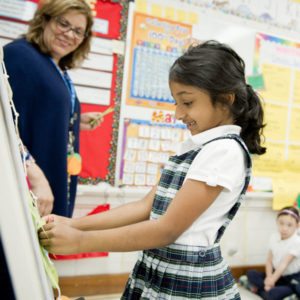 Kindergarten and Grade 1 at Grace are years of inquiry, creativity, and exploration. We consider these grades as part of our Early Childhood division because we know that children between the ages of 5 and 7 experience rapid intellectual, physical, social, and emotional growth -- all at their own pace -- which means that they still need nurturing, individual attention, and a great deal of patience. Our goal in Kindergarten and Grade 1 is to give students a supportive “on-ramp” to the exciting opportunities and demands of later elementary school. Students in these grades learn to listen to and take care of their bodies and minds; to create vibrant connections to peers and adults; and to ask big questions and use exploration and research to find their answers.
Kindergarten and Grade 1 at Grace are years of inquiry, creativity, and exploration. We consider these grades as part of our Early Childhood division because we know that children between the ages of 5 and 7 experience rapid intellectual, physical, social, and emotional growth -- all at their own pace -- which means that they still need nurturing, individual attention, and a great deal of patience. Our goal in Kindergarten and Grade 1 is to give students a supportive “on-ramp” to the exciting opportunities and demands of later elementary school. Students in these grades learn to listen to and take care of their bodies and minds; to create vibrant connections to peers and adults; and to ask big questions and use exploration and research to find their answers. Math in Focus: Singapore Math is our math curriculum for Grades 2-5. Math in Focus has a balance of conceptual understanding and procedural fluency. The concrete-pictorial-abstract learning progression ensures that students gain a deep understanding of math so that they understand why procedures work and are able to think flexibly about how to apply them. Grade 2 sees a continuation from the lower grades of concept and skill development through hands-on instruction and practice with emphasis on basic facts, place value, mental math, and geometry concepts. Grades 3-5 have an emphasis on problem-solving, skill consolidation, and a deep understanding in preparation for algebra. Students become proficient with fractions, decimals, ratios, model drawing, expressions, equations, and inequalities.
Math in Focus: Singapore Math is our math curriculum for Grades 2-5. Math in Focus has a balance of conceptual understanding and procedural fluency. The concrete-pictorial-abstract learning progression ensures that students gain a deep understanding of math so that they understand why procedures work and are able to think flexibly about how to apply them. Grade 2 sees a continuation from the lower grades of concept and skill development through hands-on instruction and practice with emphasis on basic facts, place value, mental math, and geometry concepts. Grades 3-5 have an emphasis on problem-solving, skill consolidation, and a deep understanding in preparation for algebra. Students become proficient with fractions, decimals, ratios, model drawing, expressions, equations, and inequalities. Students look beyond their own communities to examine the history, civics, geography, and government systems of peoples outside of our country and at various points in world history. Field trips, current events, technology, and primary sources are the mechanisms used to build student motivation and enhance the learning experience. Students learn to appreciate the significance of their democratic citizenship and to understand the meaning and importance of global interdependence. Social studies lessons are enhanced through curriculum units that are integrated where possible with language arts, math, art, music, science, and Spanish. Through social studies, students learn to think critically and creatively, employing skills such as reasoning, decision-making, and negotiation. It is our goal to prepare students to become informed and contributing members of a diverse America and a global society.
Students look beyond their own communities to examine the history, civics, geography, and government systems of peoples outside of our country and at various points in world history. Field trips, current events, technology, and primary sources are the mechanisms used to build student motivation and enhance the learning experience. Students learn to appreciate the significance of their democratic citizenship and to understand the meaning and importance of global interdependence. Social studies lessons are enhanced through curriculum units that are integrated where possible with language arts, math, art, music, science, and Spanish. Through social studies, students learn to think critically and creatively, employing skills such as reasoning, decision-making, and negotiation. It is our goal to prepare students to become informed and contributing members of a diverse America and a global society.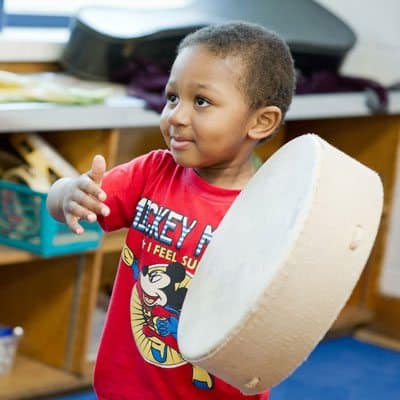 The music curriculum includes the three major areas of musical learning: appreciation, literacy, and technique/repertoire. Through a systematic study of instruments and instrumentation, students learn to appreciate first the beautiful diversity of folk music and then the logical history of art music. The goal is for each student to be able to recognize a given piece of music as either coming from a particular area or belonging to a specific era. Students are also taught to become literate in – that is, able to read and write – music. Performance of repertoire, whether exhibiting proper vocal or instrumental technique, happens as an extension of the student’s ability to read and write music as well as recognize music from around the world and throughout the ages.
The music curriculum includes the three major areas of musical learning: appreciation, literacy, and technique/repertoire. Through a systematic study of instruments and instrumentation, students learn to appreciate first the beautiful diversity of folk music and then the logical history of art music. The goal is for each student to be able to recognize a given piece of music as either coming from a particular area or belonging to a specific era. Students are also taught to become literate in – that is, able to read and write – music. Performance of repertoire, whether exhibiting proper vocal or instrumental technique, happens as an extension of the student’s ability to read and write music as well as recognize music from around the world and throughout the ages. The heart of Grace’s library program is creating a foundation for lifelong reading and learning. The cornerstones of this foundation are a love of literature and the ability to find and use information. A strong library program is crucial for teaching children to evaluate and use the information sources that best suit their needs. Therefore, the library curriculum at Grace consists of two basic parts: fostering a love of literature and developing information literacy.
The heart of Grace’s library program is creating a foundation for lifelong reading and learning. The cornerstones of this foundation are a love of literature and the ability to find and use information. A strong library program is crucial for teaching children to evaluate and use the information sources that best suit their needs. Therefore, the library curriculum at Grace consists of two basic parts: fostering a love of literature and developing information literacy.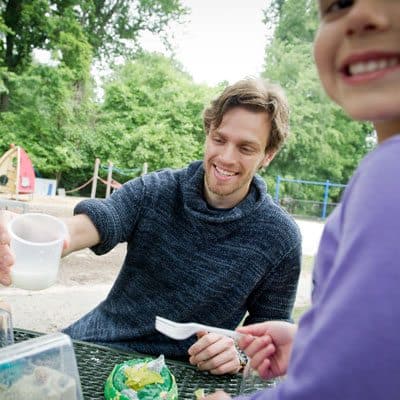 The science program for Early Childhood children encourages students to develop an awareness and appreciation of the natural world. Life, earth, and physical sciences are explored through hands-on experiences integrated throughout the curriculum. Children have opportunities to work with simple scientific tools and to observe, question, compare, classify, predict, experiment, and record. Indoor and outdoor learning experiences encourage excitement about phenomena such as: seasonal changes; caring for the environment; animal habitats and life cycles; the growth and health of our bodies; movement and gravity; and magnetism.
The science program for Early Childhood children encourages students to develop an awareness and appreciation of the natural world. Life, earth, and physical sciences are explored through hands-on experiences integrated throughout the curriculum. Children have opportunities to work with simple scientific tools and to observe, question, compare, classify, predict, experiment, and record. Indoor and outdoor learning experiences encourage excitement about phenomena such as: seasonal changes; caring for the environment; animal habitats and life cycles; the growth and health of our bodies; movement and gravity; and magnetism.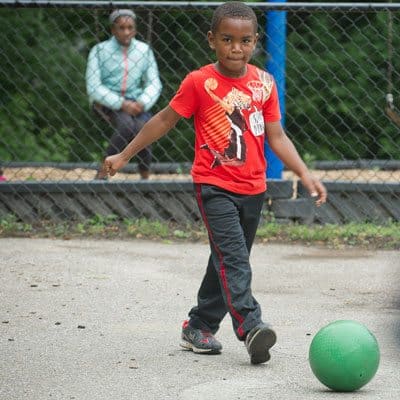 Students at Grace participate in a well-developed physical education curriculum that encourages fitness and a lifelong love of physical activity. The physical education program for our youngest students provides movement experiences that encourage children to explore spatial relationships, develop physical skills and enjoy movement challenges. A variety of activities and equipment are used to increase agility, coordination, and strength.
Students at Grace participate in a well-developed physical education curriculum that encourages fitness and a lifelong love of physical activity. The physical education program for our youngest students provides movement experiences that encourage children to explore spatial relationships, develop physical skills and enjoy movement challenges. A variety of activities and equipment are used to increase agility, coordination, and strength.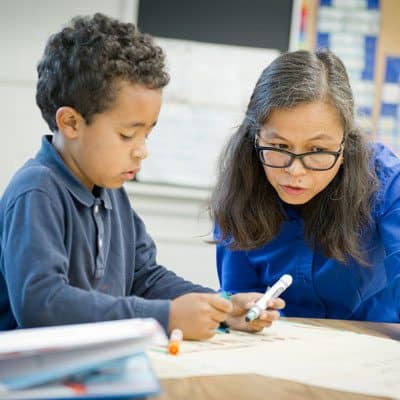 Spanish at Grace is a six level program that begins in Kindergarten and ends in Grade 5. It develops the skills of listening, speaking, reading and writing in a gradual, logical progression. The students participate in language learning activities in a positive, creative environment. As Grace welcomes new students at any grade level, many of whom have no previous experience with Spanish, our Spanish classes include review of fundamental elements of the language every year.
Spanish at Grace is a six level program that begins in Kindergarten and ends in Grade 5. It develops the skills of listening, speaking, reading and writing in a gradual, logical progression. The students participate in language learning activities in a positive, creative environment. As Grace welcomes new students at any grade level, many of whom have no previous experience with Spanish, our Spanish classes include review of fundamental elements of the language every year.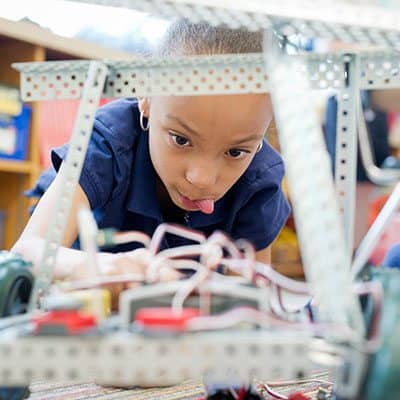 Technology and computers are viewed as teaching tools to be integrated into the learning experience. Grace believes that students should learn computer skills through the subjects that they are studying. The classroom teachers design activities that complement the development of computer skills with the content being taught in the classroom. The technology teachers are available to assist with planning lessons, helping students, and/or teaching specific computer skills.
Technology and computers are viewed as teaching tools to be integrated into the learning experience. Grace believes that students should learn computer skills through the subjects that they are studying. The classroom teachers design activities that complement the development of computer skills with the content being taught in the classroom. The technology teachers are available to assist with planning lessons, helping students, and/or teaching specific computer skills.